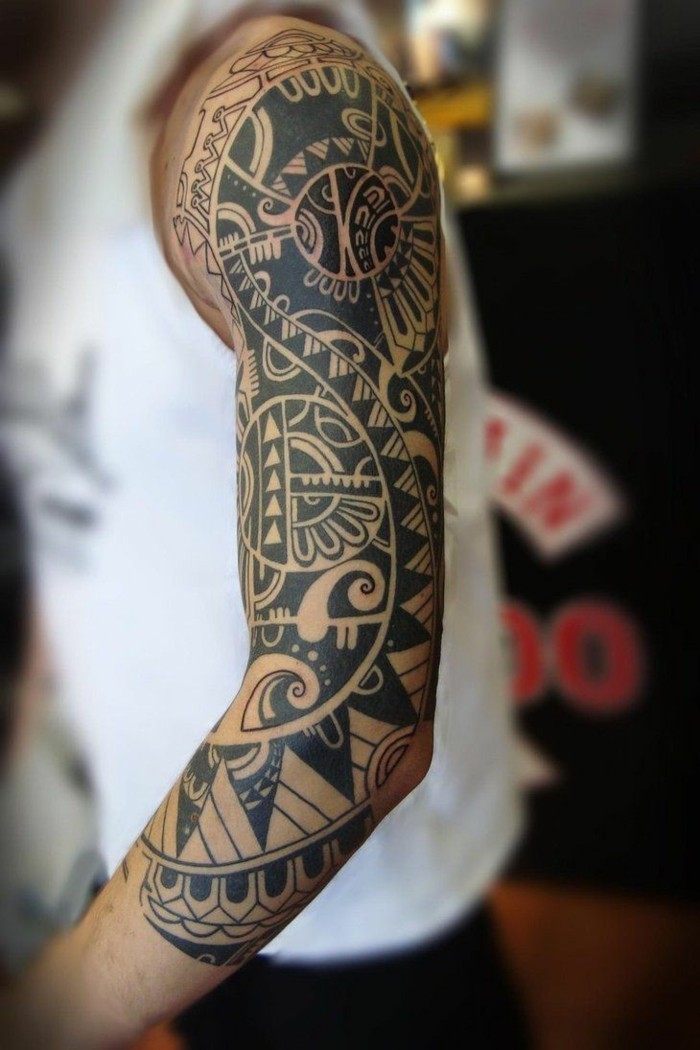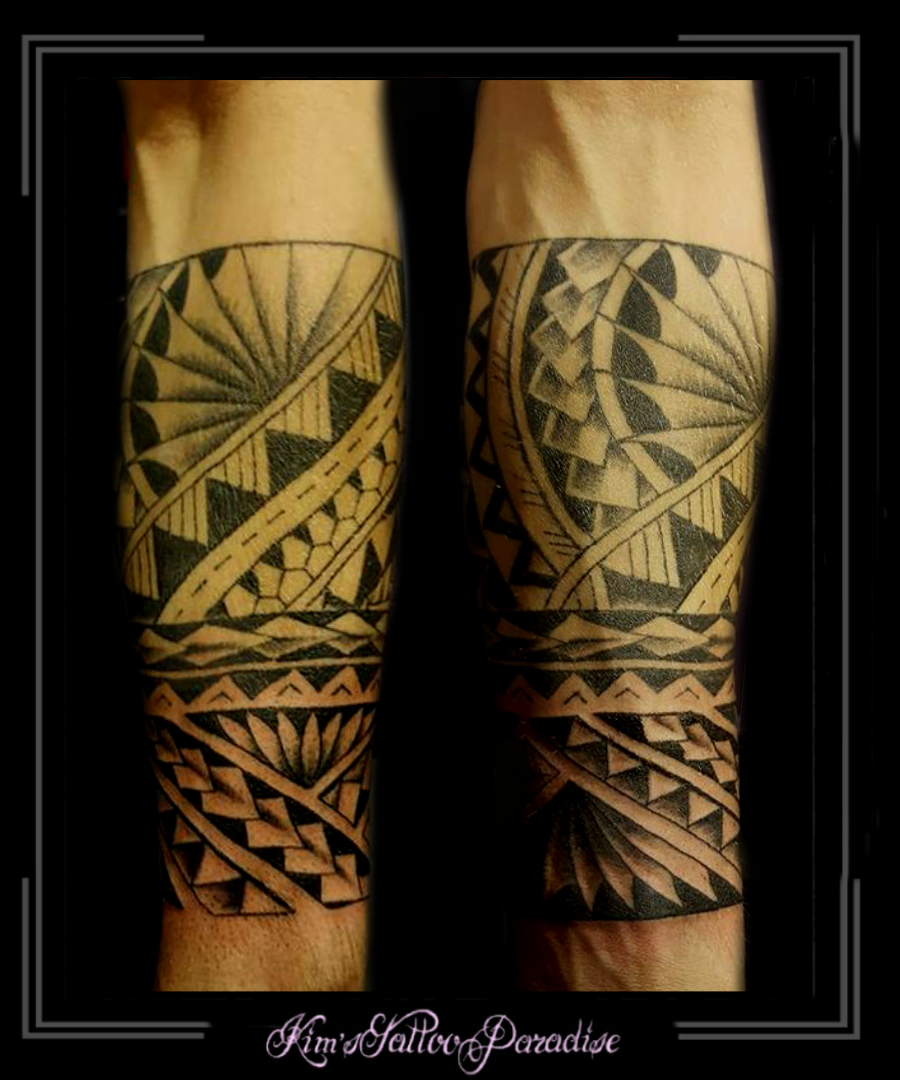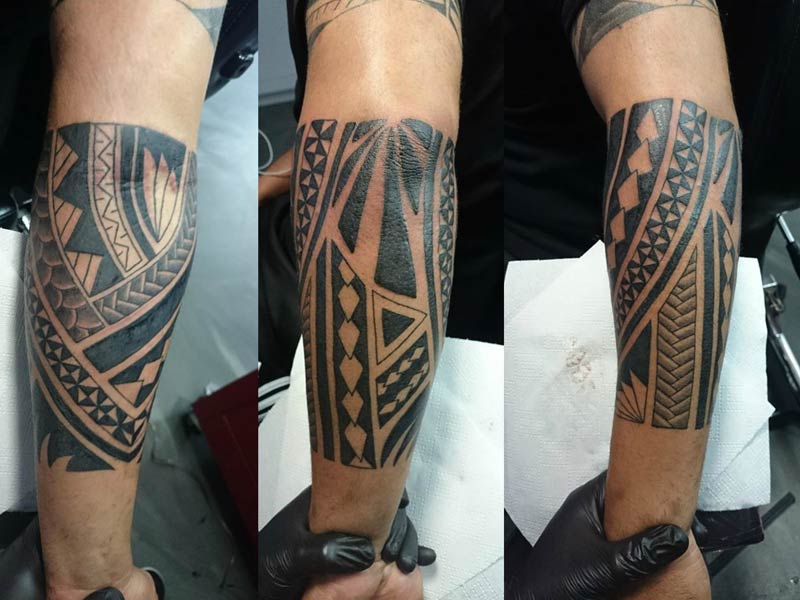MAORI POLYNESIAN TATTOO Maori Forearm Sleeve
tāmoko apply traditional tattooMāori | Noun (also known as tā moko) developed in isolation in Aotearoa New Zealand, Māori pioneered the use of smaller, narrower uhi without teeth that cut grooves through the skin. Uhi Tā Moko (tattooing instruments), 1800-1900, New Zealand. Te Papa (WE000300)

Instagram photo by Chris Higgins • Feb 10, 2016 at 427pm UTC Maorie tattoo oberarm
Common Maori Tattoo Symbols. Koru (spiral): The koru design represents new beginnings and growth with harmony. It looks like the unfurled leaf of a fern tree. Hei matau (fish hook): The fish hook tattoo symbolizes prosperity, abundance, and wealth. Single twist: A single Maori twist represents path of life.

Maori tattoo Deskundig advies, inspiratie, betekenis en alle kosten!
Maori Tattoo, Rotorua. By Destination Rotorua. Before the arrival of European settlers, the complex designs of tā moko were carved into the skin. This method of tattooing is based on the use of broad toothed combs of varying widths called uhi (chisel blades), dipped in dark pigment, and struck into the skin with small mallets known as tā.

Maori tattoo voorbeelden, laat je inspireren door Dutch Ink!
Maori tattoo, aka Ta Moko, is a form of body art practiced by indigenous Maori people in New Zealand (Maori name: Aotearoa). Like other tattoos of Polynesian islands, Maori tattoo designs are one of source patterns in tribal tattoo designs. Traditionally, men generally received moko on their faces, buttocks and thighs .

49 Maori Tattoo Ideen die wichtigsten Symbole und ihre Bedeutung
Saved Tattoo. Maori tattoos, properly referred to as moko tattoos, as a form of facial and body art originating in New Zealand. Centuries before the arrival of European travelers, the Maori people were known as fighters and defenders of their land, often getting facial and body tattoos to symbolize their devotion and willingness to protect their land and tribe, as well as their status, rank.

Maori tattoo Deskundig advies, inspiratie, betekenis en alle kosten!
93 Maori Tattoo Designs for Men. by — Brian Cornwell. Published on March 22, 2016. Updated on October 6, 2023. Tā moko, aka the traditional body art of the indigenous people of New Zealand. The taonga, or treasure, holds a special meaning for each individual bearing ink. Originally, the Moko gave insight to a man's tribal affiliation and.

armband Kim's Tattoo Paradise
45 Unique Maori Tribal Tattoo Designs Maori tribal tattoos show presence, and a deep link to the Maori community. Maoris are a staunchly proud people, who take their culture very seriously. These tribal tattoos are widely seen around New Zealand, and increasingly, the world. Check out some of the amazing Maori designs below.

Untitled Tatuaje maori antebrazo, Diseños de tatuaje maorí, Tatuaje brazalete maori
The koru tattoo is a unique and highly symbolic design that is deeply rooted in Maori culture, one of the indigenous people of New Zealand. The koru itself is a spiral shape that is reminiscent of an unfurling fern frond, and it represents new beginnings, growth, and harmony.

Maori Tattoo Betekenis en symboliek Tattoo Betekenis
Maori tattoo was once a long and labour intensive process, because it was very painful only a few parts of the body were tattooed at a time to allow healing. There are two designs for the Maori tattoos - the normal design only involved the blackening of the lines whilst the second called for blackening the background and leaving the lines.

Afbeeldingsresultaat voor tatoeage onderarm band Maoritattoos Tatouage tribal bras, Tatouages
4: The Hei Matau. The Hei Matau is a symbol of strength and prosperity, originating from Maori culture. It is traditionally carved in the form of a fish hook and is often found adorning the necks and arms of many people of Maori heritage. The Hei Matau symbolizes determination, prosperity, and fertility.

maori tattoos en la pierna Maoritattoos Maori tattoo unterarm, Unterarm tattoo, Unterarm
Maori tattoos originate from the name "Ta moko," which means "to permanently mark the body and face.". Of course, looking back hundreds of years, you won't be surprised to know that tattoos didn't take place how they do now. Back then, the skin was carved using chisels—leaving the skin with an uneven groove which ink was then.

Maori tattoo laten zetten? Uitleg over de betekenis en stijl!
Courtesy Kerry Helme. Kerri Helme's tattoos go far deeper than the layers of flesh a pigment-spiked needle made from turkey bone can pierce. Rows of triangles adorn her neckline. Tiny dots stretch.

📸(NihatTAYLAN) Unterarm band tattoos, Polynesische tattoos frauen, Tribal tattoos für männer
De meeste mensen beginnen hun maori tattoo's op hun onderarm want ja deze is toch het meeste zichtbaar en mocht je een sleeve willen dan kan je hem altijd doortrekken. Je kan de maori tatoeages op je onderarm ook mooi afsluiten met een zwarte band. Het grootste tattoo platform van Nederland
MAORI POLYNESIAN TATTOO Maori Forearm Tattoo
Facial tattoos have been a part of Maori culture for centuries, a sacred marker of the wearer's genealogy and heritage. But one woman's striking chin design - or moko - has generated huge debate.

Traditional Maori forearm tattoo design Tribal forearm tattoos, Maori tattoo designs, Full
The Maori people always considered the head the most sacred part of the body, so naturally this used to be the most common area to be tattooed. Traditionally, the men would cover their whole faces, whereas the women would tattoo only their chins, lips and nostrils. These "mokos" weren't purely decorative, they were added as each person.

Polynesische maori tattoo betekenis & 120x tattooinspiratie Maori tattoo, Maori, Klein
The process of a person receiving a tattoo involved a series of rituals - particularly prior to the arrival and interference of Europeans. The traditional Maori tattoo practice is known as ta moko. Since the head is believed to be the most sacred part of the body by the Maori, ta moko was most often done on the face.